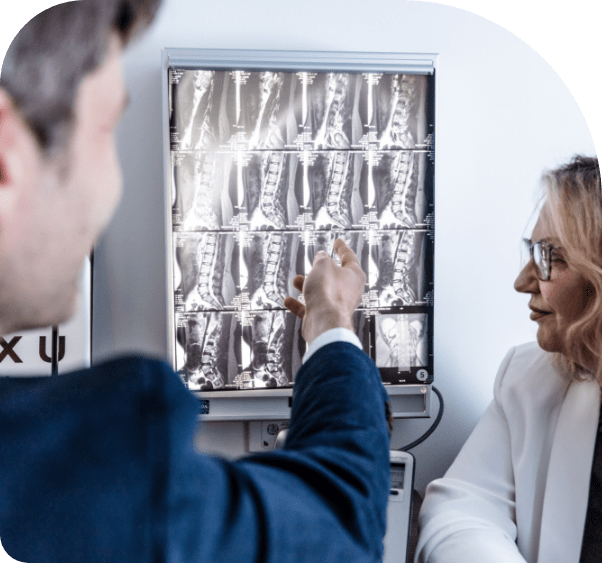Work Injuries

Back and neck problems are commonly caused by injuries at work.
What type of injuries cause back and neck problems?
Many jobs involve manual tasks. Manual tasks require physical exertion, and can be considered hazardous if they involve:
- Extreme or sudden force
- Repetitive or sustained force
- Repetitive movements
- Awkward posture
- Vibration
Heavy lifting is considered a hazardous manual task. Hazardous manual tasks are the leading cause of work-related injury.
Another common cause of work-related back and neck strain, is posture-related injury due to computer use. This is more likely in the setting of suboptimal workstation design, poor posture and sitting for extended periods of time.

Can workplace injuries be prevented?
Many Workplace injuries are preventable.
The risks of hazardous manual tasks can be mitigated by identifying and managing them before they cause injuries. Some risks may be eliminated (for example, by automating a manual task), while others can be minimised (for example, by replacing heavy items with objects that are easier to handle). Employers are obliged to provide the safest possible working environment. Training should be given to help employees comply with safety regulations.
What is the procedure for work-related injuries in New South Wales?
Almost all businesses in New South Wales are obliged to have workers compensation insurance.
In case of work injury, first aid or emergency medical treatment should be received as required.
Employees should inform their employer of the injury as soon as possible. If the injury is serious, the employer must call SafeWork NSW immediately. For all injuries, the employer needs to notify the insurer within 48 hours. (The employer is obliged to provide the employee with the insurer’s details. If required, the employee may inform them of the incident him/herself.)
After this, the employee should consult their GP for a SIRA (State Insurance Regulatory Authority) certificate of capacity. This document is sent to the insurer by the employer. The insurer will inform about any payments the employee is entitled to. Payments cover reasonable medical expenses, and may provide weekly compensation if the employee is unable to work during his/her recovery.
It is preferred that the employee stays at work, or returns to work as soon as possible, after an injury. While recovering, the employee may require adjustments to their work duties.

How does the employee organise medical treatment for a work-related injury?
In most cases, approval should be obtained from the insurer before receiving treatment for a work-related injury. If urgent care is required in the first 48 hours after an injury, medical care can be sought without prior approval.
The employee is entitled to choose their own doctor when seeking treatment for a work-related injury. The team at Macquarie Neurosurgery & Spine will gladly assist with a specialist appointment. Our spinal specialists provide expert treatment for back and neck problems, and will support employees in transitioning back to full employment. When making their first appointment for a work-related injury, employees will require their claim number. It would also be helpful if a copy of their certificate of capacity can be provided.
